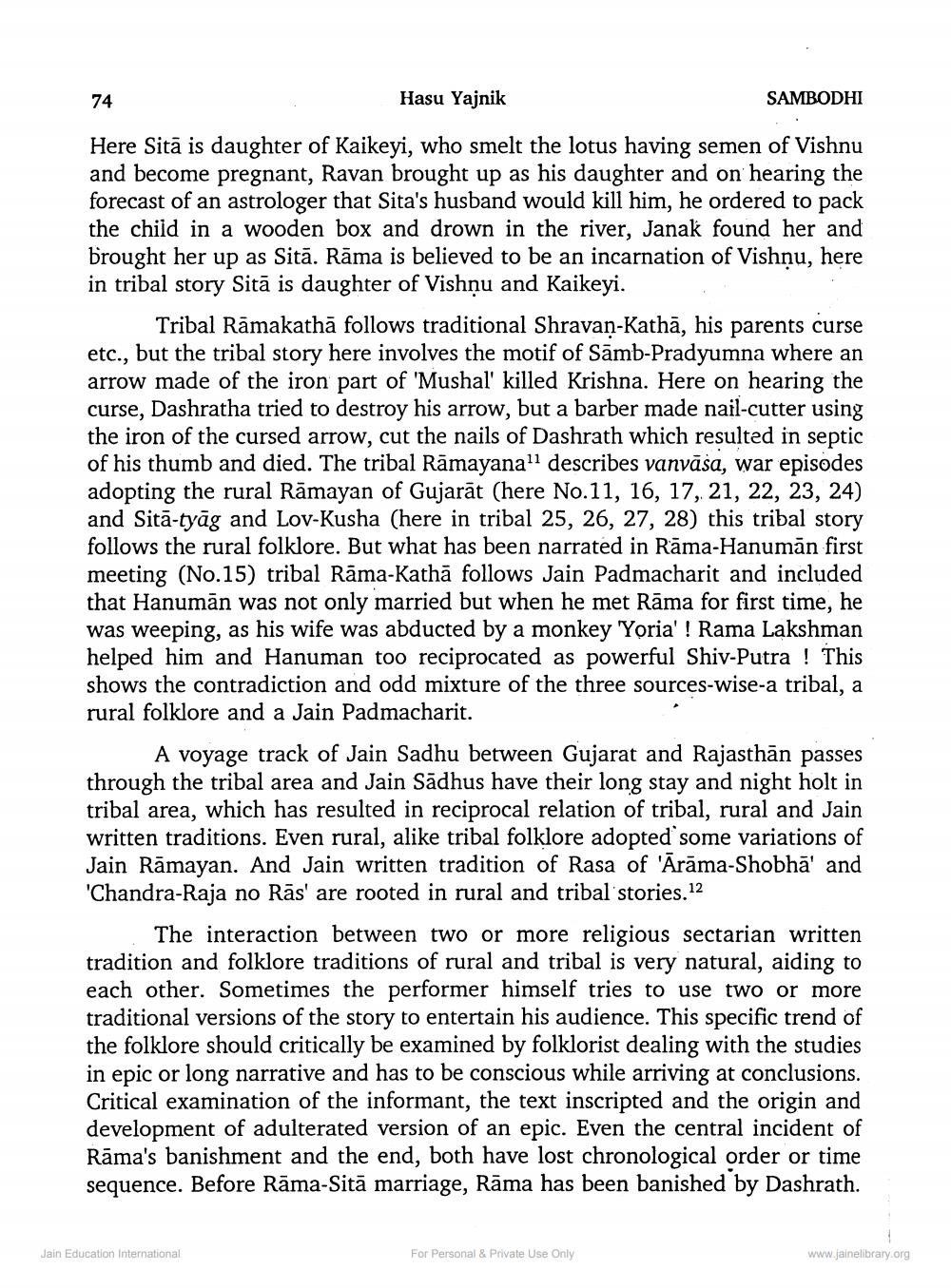________________
74
Hasu Yajnik
SAMBODHI
Here Sitā is daughter of Kaikeyi, who smelt the lotus having semen of Vishnu and become pregnant, Ravan brought up as his daughter and on hearing the forecast of an astrologer that Sita's husband would kill him, he ordered to pack the child in a wooden box and drown in the river, Janak found her and brought her up as Sitā. Rāma is believed to be an incarnation of Vishnu, here in tribal story Sitā is daughter of Vishnu and Kaikeyi.
Tribal Rāmakathā follows traditional Shravan-Kathā, his parents curse etc., but the tribal story here involves the motif of Samb-Pradyumna where an arrow made of the iron part of 'Mushal' killed Krishna. Here on hearing the curse, Dashratha tried to destroy his arrow, but a barber made nail-cutter using the iron of the cursed arrow, cut the nails of Dashrath which resulted in septic of his thumb and died. The tribal Rāmayanall describes vanvāsa, war episodes adopting the rural Rāmayan of Gujarāt (here No.11, 16, 17, 21, 22, 23, 24) and Sitā-tyāg and Lov-Kusha (here in tribal 25, 26, 27, 28) this tribal story follows the rural folklore. But what has been narrated in Rāma-Hanumān first meeting (No.15) tribal Rāma-Kathā follows Jain Padmacharit and included that Hanumān was not only married but when he met Rāma for first time, he was weeping, as his wife was abducted by a monkey 'Yoria'! Rama Lakshman helped him and Hanuman too reciprocated as powerful Shiv-Putra ! This shows the contradiction and odd mixture of the three sources-wise-a tribal, a rural folklore and a Jain Padmacharit.
A voyage track of Jain Sadhu between Gujarat and Rajasthān passes through the tribal area and Jain Sadhus have their long stay and night holt in tribal area, which has resulted in reciprocal relation of tribal, rural and Jain written traditions. Even rural, alike tribal folklore adopted some variations of Jain Rāmayan. And Jain written tradition of Rasa of 'Ārāma-Shobhā' and 'Chandra-Raja no Rās' are rooted in rural and tribal stories. 12
The interaction between two or more religious sectarian written tradition and folklore traditions of rural and tribal is very natural, aiding to each other. Sometimes the performer himself tries to use two or more traditional versions of the story to entertain his audience. This specific trend of the folklore should critically be examined by folklorist dealing with the studies in epic or long narrative and has to be conscious while arriving at conclusions. Critical examination of the informant, the text inscripted and the origin and development of adulterated version of an epic. Even the central incident of Rāma's banishment and the end, both have lost chronological order or time sequence. Before Rāma-Sitā marriage, Rāma has been banished by Dashrath.
Jain Education International
For Personal & Private Use Only
www.jainelibrary.org




